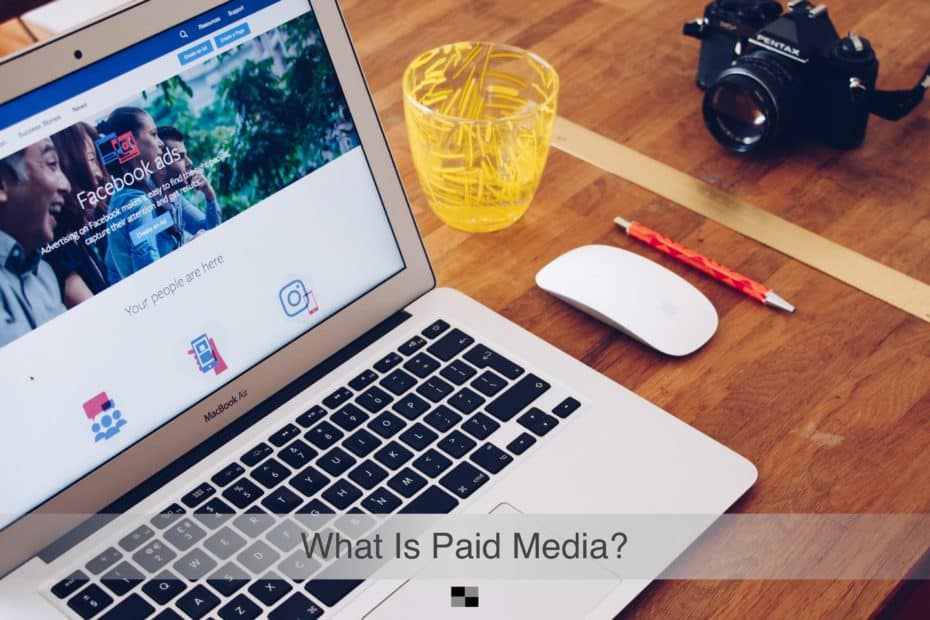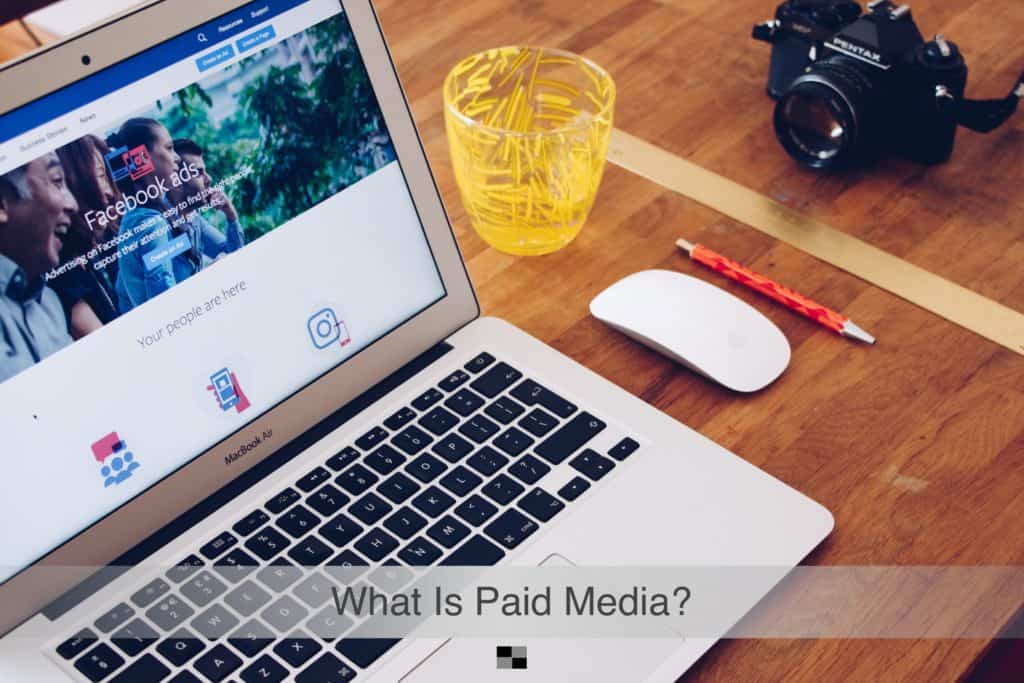
Let’s talk about paid media. It’s not popular with people because it’s intrusive but this doesn’t stop organizations from running ads.
Billions of dollars are poured into digital ads every year. While most might people think of television when they think of ads the truth of the matter is that Google and Facebook are the true behemoths of the ad industry.
In the second quarter of 2020, which was thrown into chaos by COVID-19, Facebook made $18.3 billion in ad revenue while Google raked in $29.9 billion.
Paid media is typically looked at as more the domain of marketers than public relations (PR). As somebody who studied PR in school, I can tell you that we never talked about paid media. Not even once.
In the PR community paid media is a controversial idea to the say the least. Purists completely reject it.
The truth is that I never really saw it as PR tactic until I found the PESO model, created by Gini Dietrich at Spin Sucks.
This is a debate for another day but if you are executing an integrated plan (and I’m a big fan of integrated plans), you can’t ignore paid media.
The simple fact of the matter is that paid media done right can get results. It can also provide data that can inform other pieces of your marketing and public relations.
If you aren’t using paid media, you are missing out on some great benefits.
I’ve talked about paid media in the past but always at a high level. In this article, I’m going to dig in a little deeper. When you walk away today, you will know what paid media is, the different types of paid media, and why you should use paid media.
Paid Media Definition
Before we can get into a discussion about paid media we need a common meaning of what it is. There are many things that fall under the banner media.
I’m not a traditional marketer so I don’t engage in what many would consider traditional marketing. This means the ads that have been around for decades such as television, radio, newspaper, magazine, and billboard ads are not what I’m referring to.
When I use the term paid media I’m talking about digital ads.
Types of Paid Media
It’s hard to go on the internet and not be exposed to paid media. There are sites in which paid media is a big driver, if not the main driver of revenue.
This means while they allow you to use their site for free, you become the product that they sell to make money. In other words, they allow companies to buy ads to sell their products and services to you.
Whether it’s Google or Facebook, there is money to be made off users and that comes in the form of paid media.
Paid media can potentially benefit the site, the users, and the advertisers. That is if its done right and that can sometimes be a big if but that’s a debate for another article.
I see four main types of paid media:
- Paid Search
- Paid Social
- Display Ads
- Native Ads
You have seen all these at some point or another. Depending on your internet habits, it’s possible that you see them on an everyday basis.
While they are all considered paid media, a big differentiator between them is where you see them because they each support different types of activities that you participate in on the internet.
It could be visiting a news site, searching for information, or just catching up with your friends on social. Whatever you do, there is a type of paid media that can potentially be used to reach you.
Before we get into each type of paid media let’s take a minute to discuss PPC which is a common advertising model in paid media.
What Is PPC?
PPC stands for pay-per-click. With a PPC model, you won’t pay anything for your digital ad until somebody clicks on it. You could run an ad for two weeks and if no one clicks on it, you wouldn’t pay anything. You only pay if an action is taken, in this case, somebody clicks on your ad to get more information.
When they take this action it is referred to as a click-through. They see an ad and clicked-through to where you wanted them to go. That destination could be your website, a blog, post, a product page, or landing page.
The cost of a click can be impacted by the popularity of a keyword or the number of people running ads on a platform. The nuances of PPC can be different depending on the type of paid media you’re using so it’s always good to understand how it will work on the channel you’re using (Wordstream has a nice article on how PPC works that is specific to Google that would be good to check out).
What Is Paid Media Search?
The dominant player in paid search is Google. Sure, there are other search engines that offer paid search such as Bing but Google is the 400-pound gorilla of this space.
Google is dominant in this space because they are the dominant search engine. Nearly 90% of searches worldwide happen on Google. It’s no coincidence when people need to do a search for information on a topic we tell them to google it.
Paid search is the digital ads that come up before your results when you enter a search. Let’s look at a couple of examples.
Maybe you need some project management software. You go to Google and enter this term in a search query and come up with this result:
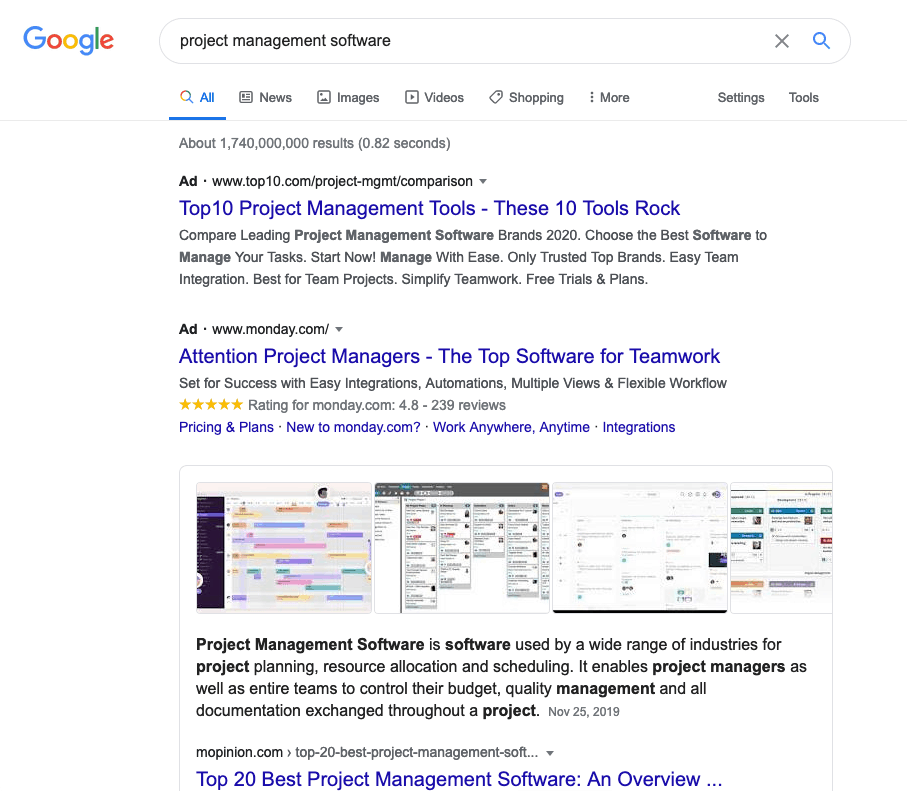
Or maybe you’re looking for a new tablet:
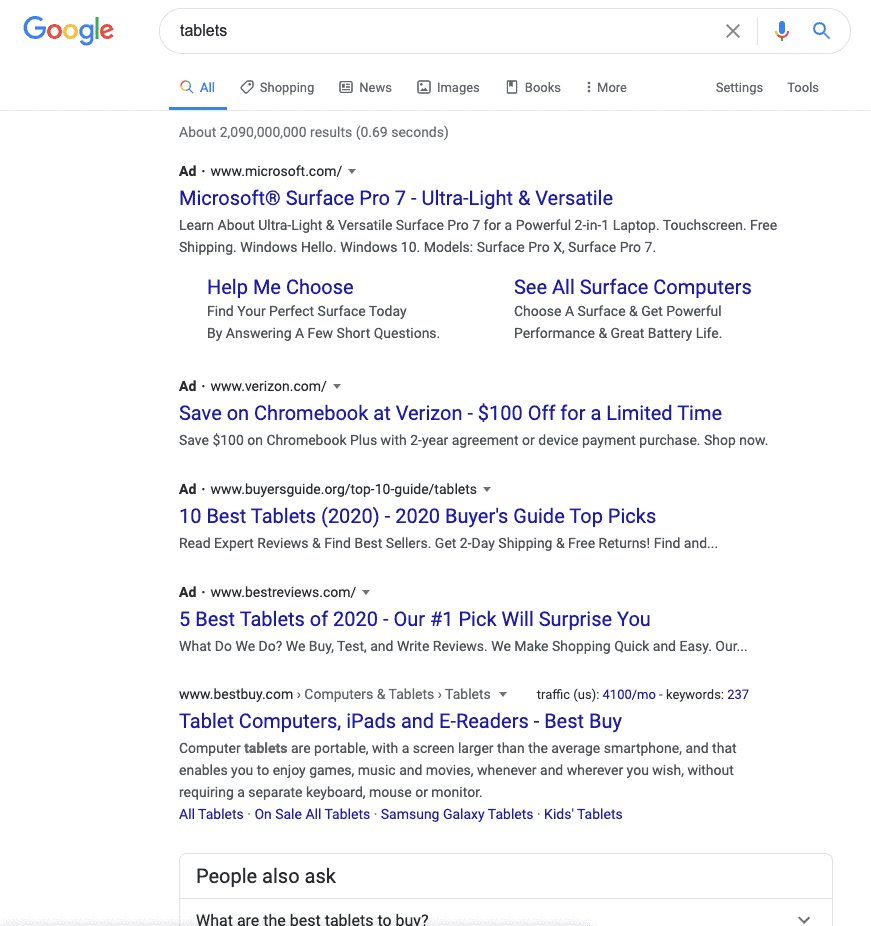
For both these queries, before Google shows you a list of results they show you ads that are related to your search. Why? Because Google makes most of its money on ads.
If you click on an ad, Google is making money so they want you to see the ads first.
Something to keep in mind is you won’t necessarily see an ad for search that you do. They only come up if they are relevant. What makes them relevant is what keywords the advertiser is targeting.
Paid search is a deeper subject that I’m not going to get into with this article. However, if your curious how it works, google it.
What Is Paid Media Social?
I’ve always heard this referred to as paid social so I use the same terminology. You’ve no doubt seen paid social whenever you’ve been on a social media site. It’s how most social media companies make money.
Paid social can be defined as ads on a social media platform.
Facebook, Instagram, Twitter, LinkedIn, Snapchat, TikTok, Pinterest, WeChat, and WhatsApp all have millions of users. If you can join with nothing more than an email address, then the social media networks will make their money with ads.
Social media ads are popular because of their reach and cost. Let’s take a quick look at the number of active users of some of the most popular social media platforms via data from Statista for July 2020:
- Facebook – 2.6 billion
- WhatsApp – 2 billion
- Instagram – 1 billion
- TikTok – 800 million
- Snapchat – 397 million
- Pinterest – 367 million
- Twitter – 326 million
Those are big numbers but I don’t want you to be carried away with them. The most important thing is whether the audience you are trying to reach is on these platforms.
The second piece of the puzzle is cost. Paid social is cheaper than traditional ads. While you might end up spending a million dollars on paid social it will take place over a much longer time period than the famed 30-second Super Bowl commercial. Like most other forms of digital ads, you will only be charged (in most cases) if some clicks on your ad. This means most paid social ads are PPC.
Paid social also slips into a user’s feed which can make it seem more like native advertising (more on that later). All a user needs to be exposed to your ad is to scroll through their feed. Here are some examples that I found in my feeds on Facebook, LinkedIn, Twitter, and Pinterest:
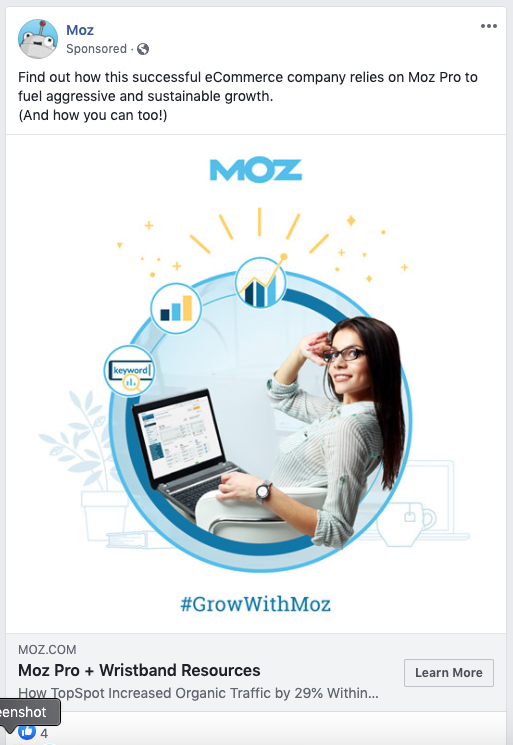
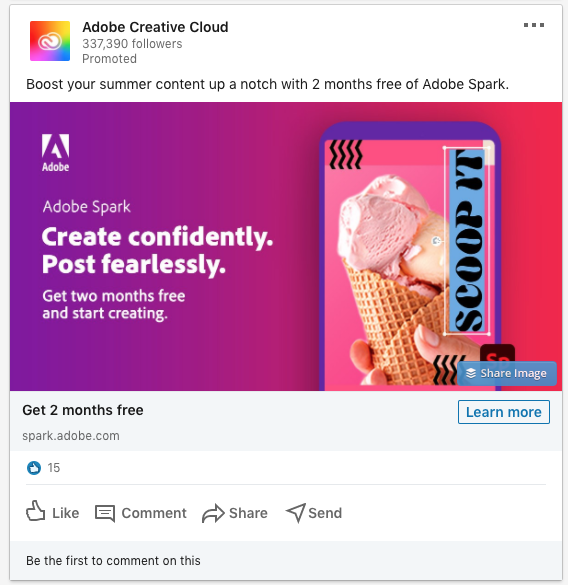
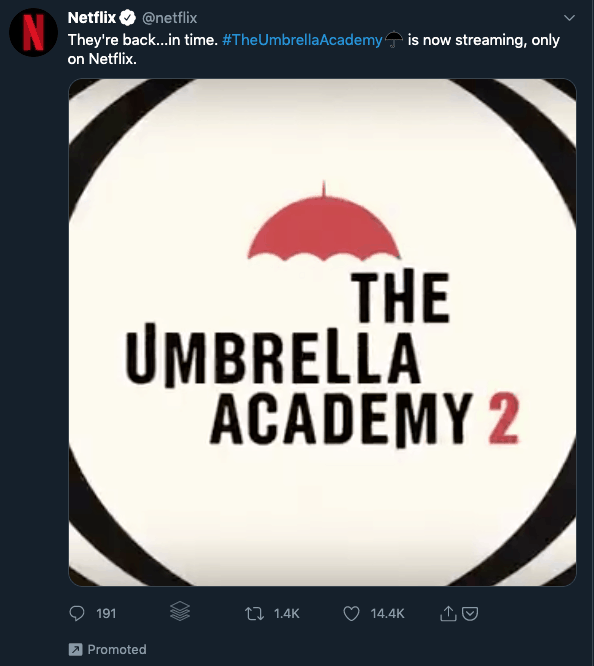
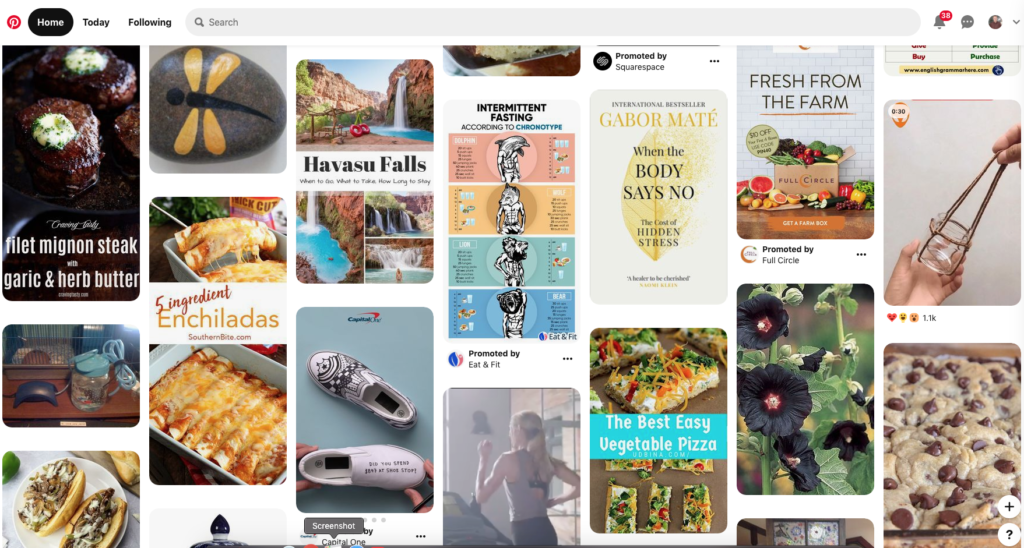
If you have been on any of these platforms you’ve seen something similar. I’d point out that the Umbrella Academy ad capture on Twitter was a video as was the Eat & Fit ad on Pinterest.
Outside of cost and potential reach, another positive is flexibility. If you took out an ad on television it would have to be video. In a newspaper, magazine, or even a billboard would be limited to text and a picture. Paid social allows for both these options and offers more.
Facebook offers five different ad formats that can be used there, on Instagram, through Messenger, and on its Audience Network. LinkedIn, Twitter, Pinterest, and Snapchat also provide multiple options.
As of the date of this article, the social media networks still allow you to narrow your target audience. When you run a television ad for a product whose audience is women between the age of 26-35 anybody who happens to be watching TV will see it. It’s a spray and pray approach. You are running the ad in the hope that somebody in your audience sees it.
Paid social allows you to target that specific audience. Only those you have targeted will see it.
This type of paid media will also allow you to become super-specific. Let’s narrow your ad down even further. Paid social will allow you to target women between the age of 26-35 who live in Billings, Montana. Then it can allow you retarget those same people as they browse the internet with display ads.
Display Ads
Display ads are the oldest ad type on the internet. It doesn’t matter where you go, you can find a display ad. Here are examples from three examples from the websites of Fox News, CNN, and MSN.



The problem with display ads is that they have been around so long that people have learned to ignore them but that hasn’t stopped brands from using them.
They can be useful (if not kind of creepy) when you are retargeting people who have visited your site or interacted with a previous ad.
You’ve probably noticed this. You visit a company’s website and then all of a sudden you start seeing display ads featuring that company following everywhere you go.
This site is hosted on Bluehost so I came to its site to log-in so write this post and sure enough, because I was on Bluehost’s site, as I browse the internet, I’m being retargeted through a display ad on MSN.
Display ads have extremely low click-through rates so they aren’t a good investment you’re simply taking out an ad. You would be better served with paid search or paid social and then retargeting people as they browse.
Native Ads
Native ads are similar to display ads but unlike display ads they aren’t going to follow around the internet. You can find native ads on news sites, entertainment sites like IMDB, and even within your social media feeds. This makes them more versatile than display ads but native ads can be confusing.
Through my own research, I’ve found that nailing down a common definition has been elusive but I did find one definition that I liked brought to you by none other than the Native Advertising Institute which defines it as: Paid advertising where the ad matches the form, feel and function of the content of the media on which it appears.
Here is an example from MSNBC:
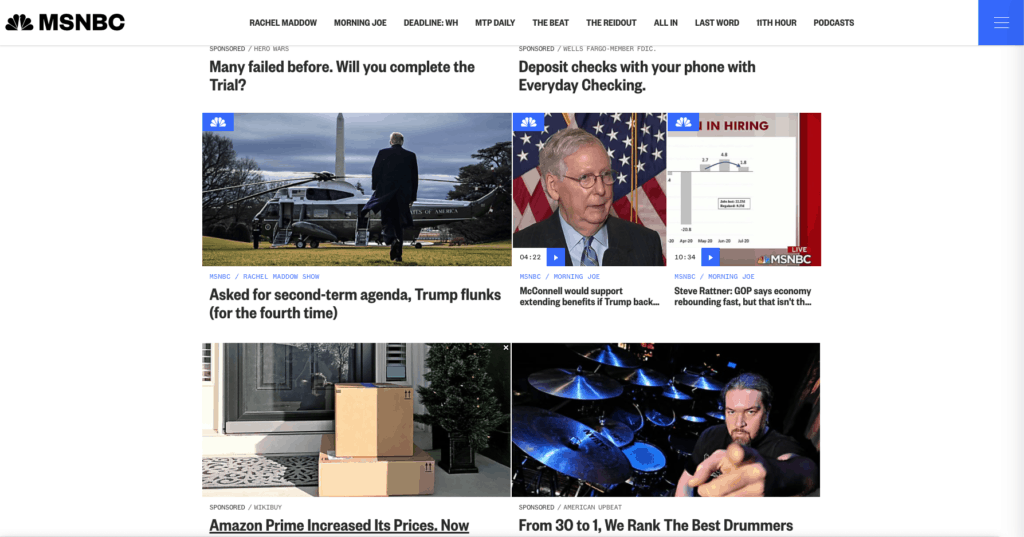
In this example, MSNBC has its content sandwiched between native advertising. The ads are meant to feel like they are part of the content around it which is why they have a higher click-through rate than display ads.
It’s important for you to understand native ads but keep in mind they are for every situation so before you run a native ad with a service such as Outbrain, make sure you what result you want.
Why Use Paid Media?
At the beginning, I said that if you were executing an integrated plan, you would using paid media.
You might be wondering why. If you’re not executing an integrated plan, you might also wonder why should use paid media.
First, I’ll tell you that I’m a huge advocate of owned media. This is media in which you own the channel and the content. This is your website and your email list. People aren’t searching for your email list but they could be searching for a product or service that you offer. The question becomes, how do you get them to your website.
You can use search engine optimization (SEO) but this tactic takes time. It could be months before you see any traction with SEO.
You could use shared (social) media like Twitter or Facebook and they can get results but you won’t see a huge impact until you have a sizeable social media presence.
You can use earned media but that can be a long process as well.
The quickest way to see results is to use paid media. I wish it weren’t true because paid media obviously comes with a cost but it’s true. You will get out in front of people much quicker with paid media.
There is another benefit of paid media that I recently learned. It was so obvious I felt stupid but apparently, it’s something that gets missed frequently.
If you are using Google Ads, you will have data on what keywords are working well. You can take this data and apply it to your SEO efforts. This will help set you up for the short and the long term.
We have covered a lot of ground today. I didn’t get into any specifics on how to run any of these ads but look for those articles in the future. In the meantime, as always, if you have any questions enter them in the comments below or contact us. I’m always happy to help.
*Photo by Will Francis on Unsplash
- Is Your Marketing Connected? - March 6, 2025
- Stop Planning and Start Strategizing - October 24, 2024
- The Importance of Creating a Connection With Your Marketing - June 6, 2024

